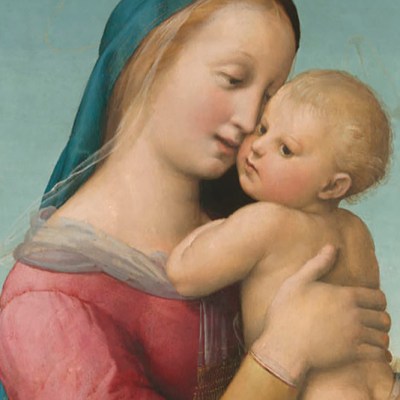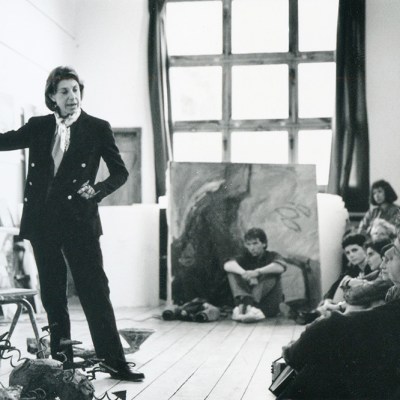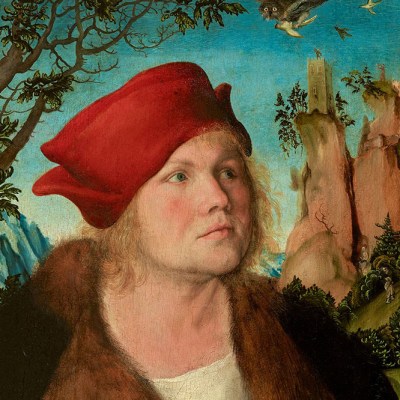From the September 2022 issue of Apollo. Preview and subscribe here.
For some scholars, the Italian Renaissance began in 1260, the year the sculptor Nicola Pisano signed his name on the pulpit in the Baptistery at Pisa. The architectural framing and lively modelling of the figures clearly show the influence of the carved friezes on the antique sarcophagi in the Camposanto, as well as the Roman triumphal arches that Pisano may have seen in Rome. He went on to create carved masterpieces in Siena, Pistoia and Perugia, maintaining an austere but vivid fusion of the classical with the northern gothic.
Although Nicola is accepted as an important forerunner of the Florentine Renaissance, it is his unrelated namesake, Andrea Pisano, who brought this style to Florence. He initiated the landmark project of creating reliefs for the bronze doors of the Baptistery in Florence in the early 1330s and carved a series of marble hexagonal panels for the lower level of the Bell Tower, introducing into three dimensions the sober expressive realism of his master, Giotto. Works on the market by any of the Pisani are ‘as rare as hens’ teeth but highly desirable,’ Alexander Kader, senior director and head of the European sculpture and works of art department at Sotheby’s, London tells me.
Virgin and Child (c. 1485), Andrea della Robbia. Christies’ London, £296,750
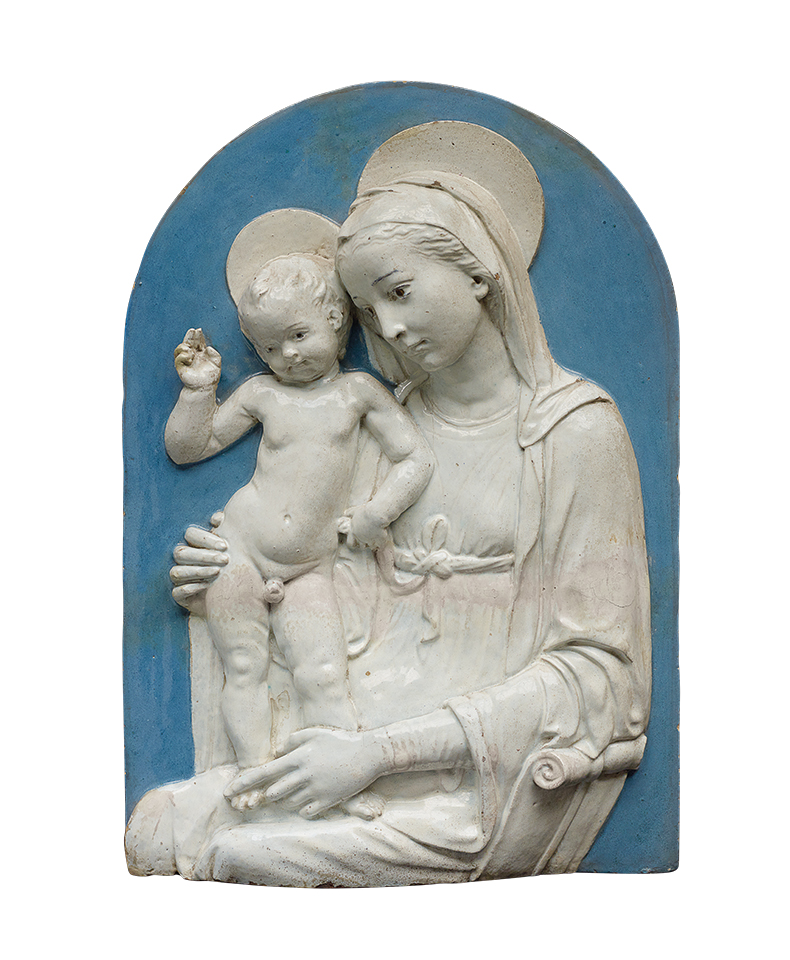
In 2020, one appeared at TEFAF Maastricht. London dealer Stuart Lochhead presented a single marble figure of Saint John the Baptist from c. 1362–63 by Andrea’s son Nino Pisano, which had not been seen on the market since a Sotheby’s sale in 1956. Lochhead reports: ‘a lot of the surface is intact.’ It is currently on sale for £1.3m.
‘These [early Renaissance Tuscan] works are very strong and powerful but in a quiet way,’ he continues. ‘Enthusiasm for them may have ebbed, by comparison with showier pieces, but they are extremely rare, extremely important.’ He says that the firm attribution adds to the appeal, as does the scale of the figure. At the turn of the 20th century such works were extremely popular, he adds, with Florentine dealer Stefano Bardini a key supplier to both the European and North American markets.
Bardini was feeding a craze for Renaissance works of art that dated back to the early and mid 19th century, encouraged by new editions of Giorgio Vasari’s encyclopaedic Lives of the Artists and pioneering cultural histories including Jacob Burckhardt’s The Civilization of the Renaissance in Italy (1860). Market interest focused on those stars of the 15th century whose groundbreaking, expressive, monumental but naturalistically posed figures adorned the facades of major secular and religious buildings in Florence. These included Donatello; Lorenzo Ghiberti, who won the famous competition of 1401 to design a set of bronze doors for the Baptistery; Luca della Robbia, the innovative sculptor specialising in glazed terracotta ceramics; Desiderio da Settignano and Benedetto da Maiano.
Head of a Boy, c. 1465, Mino da Fiesole (1429–84), marble,
ht 27.9cm. Christie’s New York, $212,500
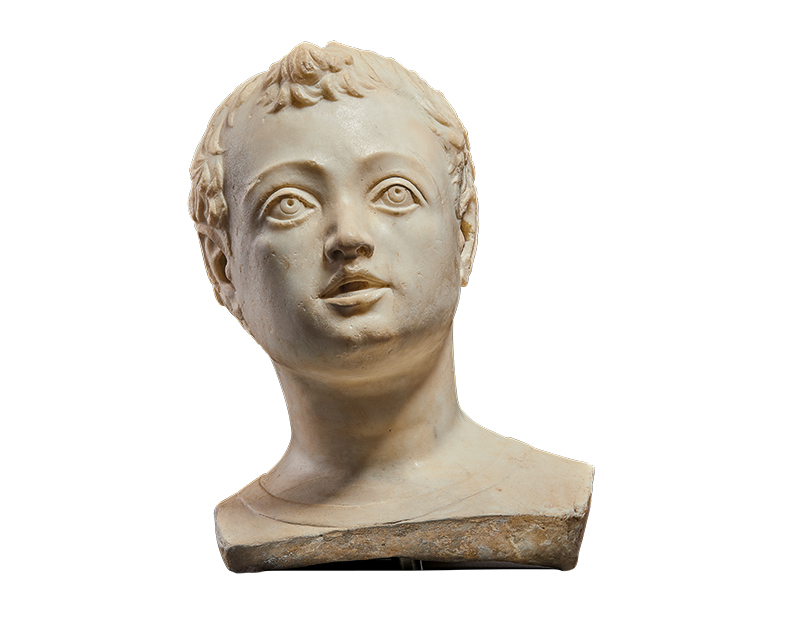
The passion for Tuscan sculpture of the early Renaissance lasted, suggests Donald Johnston, international head of sculpture at Christie’s, until around 1990. He asserts that in the last five years, however, the field ‘has come back into prominence’, with a few collectors with deep pockets competing for the best pieces. It is striking, for instance, that a white marble head of a boy by Mino da Fiesole, dated c. 1465, once owned by Bardini, sold at Sotheby’s New York in 2015 for $100,000 and then at Christie’s New York in October 2021 for $212,500, with the same estimates ($100,000–$150,000). Of course, some artists have always retained their value, chief among them Donatello, his general fame boosted by recent exhibitions, including ‘Donatello, the Renaissance’ at the Palazzo Strozzi and the Museo Nazionale del Bargello in Florence this summer.
There are, though, few works by Donatello that come to market. In 2006 the Borromeo Madonna, a terracotta relief of the Madonna and Child, (c. 1450), attributed to Donatello, sold at Sotheby’s New York for $4.4m (est. $4m–$6m). It is now in the Kimbell Art Museum, Fort Worth. Two years later, a gilded and painted terracotta relief of the same subject sold for $5.6m also at Sotheby’s New York (est. $2m–$4m). Meanwhile, the sculptor Gregorio di Lorenzo, previously known as the Master of the Marble Madonnas has gained admirers. A characteristic Madonna and Child enthroned (c. 1490–1500) sold at Christie’s London in July for £63,000 (est. £60,000–£100,000). Johnston comments that the pupil of Desiderio da Settignano ‘has a quite distinctive style. Clients like a firm attribution, which is difficult in this field, where there is very seldom a name attached.’
Madonna and Child (c.1425–50), Lorenzo Ghiberti and workshop. Sotheby’s New York, $576,600

Moreover, with masters almost universally running workshops, which turned out thousands of sculptures in marble, terracotta, plaster, bronze and wood based on their models, largely of the Madonna and Child, there is plenty of room for uncertainty. Johnston explains that in the case of the active market in Della Robbia terracottas, collectors are seeking an early example by Luca himself, or else one by his nephew Andrea della Robbia, known to be unique, modelled by hand, ‘not a squeeze from a mould’. In December 2018, a charming glazed Virgin and child by Andrea (c. 1485) sold at Christie’s London for £296,750, more than twice the high estimate £120,000. More spectacularly, in January 2021 a tender tin-glazed relief of the Madonna and Child (c. 1450) by Luca, from the Albright-Knox Art Gallery, sold at Sotheby’s New York for $2m – double the top estimate.
Kader credits the scholarly exhibition ‘Della Robbia: Sculpting with Color in Renaissance Florence’ at the Museum of Fine Arts, Boston, in 2016, and others like it, with helping the market distinguish the very best from the much less highly valued rest. He comments, ‘This is a sophisticated market with quite a traditional collector base in the US and Europe.’
Pair of Kneeling Angels (first half of 16th century), Master of the Unruly Children, probably Sandro di Lorenzo di Smeraldo. Sotheby’s London, £94,500

A pair of terracotta works by the Master of the Unruly Children (probably by Sandro di Lorenzo di Smeraldo) were pride of place at Trinity Fine Art this summer as part of the exhibition ‘Sacred & Profane; Italian Terracotta Sculpture from the 16th to the 18th centuries’. Created in the 1520s, they reflect the shift to the High Renaissance. Tom Dawnay of Trinity Fine Art says, ‘Terracotta shows the human hand. Collectors of terracottas have a visceral passion.’ He also reflects that such works are currently extremely scarce, owing to Italy’s strict laws against exports.
Bruno Botticelli of Botticelli Antichità, a leading Florentine dealership exhibiting at the Biennale Internazionale dell’Antiquariato di Firenze this month (24 September–2 October), regrets the current emphasis on big names. He says, ‘The influence of the modern art market and auction houses has been to focus the market on attributions. We can have great anonymous sculpture or a marvellous fragment. I cannot understand why we accept ancient Roman fragments or a super expensive Northern Renaissance Madonna with no author but for the Italian Renaissance sculptures we look only for big names and perfect condition.’
From the September 2022 issue of Apollo. Preview and subscribe here.

